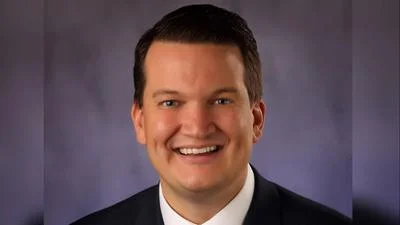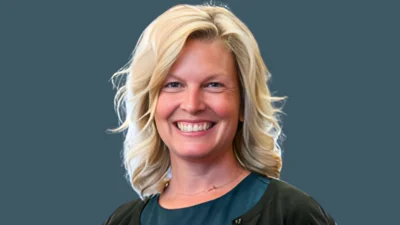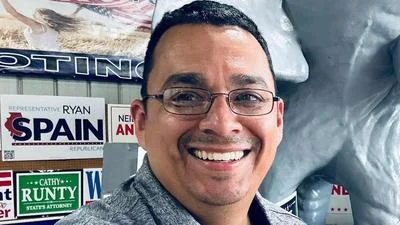City of Byron Committee of the Whole met June 28.
Here are the minutes provided by the committee:
CALL TO ORDER – Mayor John Rickard called the meeting to order at 6:30 pm
1. ROLL CALL – Aldermen present: Todd Isaacs, Emily Gerdes, Mittzi Fulrath, Ron Boyer, Jessica Nehring, Michael Gyorkos. Six members present by roll call vote. Quorum established.
Aldermen Absent: Christy Hanlin
PRESENT: Mayor John Rickard City Clerk Caryn Huber
City Administrator Brian Brooks
Dir. Of Public Works Aaron Vincer Engineer Jason Stoll
2. APPROVAL OF AGENDA – Mayor Rickard asked if anyone had changes to the agenda. They did not. Roll call vote: Gerdes, AYE; Fulrath, AYE; Boyer, AYE; Nehring, AYE; Gyorkos, AYE; Isaacs, AYE. Motion passed: AYE, 6; NAY, 0; ABS, 0.
3. PUBLIC COMMENT – None
4. NEW PUBLIC WORKS BUILDING/FINANCING
5. FINANCING-WATER/SEWER RATE STUDY
These two topics were discussed simultaneously. Administrator Brooks explained that the Committee of the Whole meeting was scheduled to present all the same facts to council members. The goal of the meeting is to map out a path to pursue, whatever the decision may be. The only things in place right now are that we have an agreement to obtain land from the Forest Preserve, and engineers are designing the sewer plant. Design plans are also in motion for a new public works building.
Presently, the Public Works Department has outgrown their current building. It is at least 75 years old, and equipment is being stored at three other locations. With the re-design of a new WWTP, components need to be built on higher elevations and out of the flood plain. The public works building sits on the higher elevation and therefore needs to be moved to allow room for the WWTP expansion. The city worked with CORD/Larson & Darby and they presented the city with a design/build that meets current and future needs (provided Byron does not have significant unexpected growth). It is large enough to store all the department’s vehicles and has ample storage. It also allows for some expansion if needed in the future. Initial cost estimates have come in at $2.9 million. This does not include redoing the roadway. With the roadway, total cost is estimated to be $3.2 million.
Parts of the WWTP are over 100 years old. Director Vincer explained that the primary clarification is being bypassed right now because pieces of concrete are falling into the tank and into the pumps. Administrator Brooks added that we are meeting all of our standards, but the plant is failing as a whole. If we do not take action in the near future, the EPA could step in and dictate that we build a new plant as well as set our rates. We also expect increased regulations over the next 10 years. Director Vincer stated that we have applied for our discharge permit (the mussel survey discussed recently is part of that). The EPA is setting tighter limits on discharge permits and adding additional requirements such as PFAS.
Alderman Gyorkos asked if upgrading the WWTP, rather than rebuilding, is an option. Director Vincer believes the loss of efficiency would make this a less than desirable option long-term. Engineer Stoll added that the rebuild does include renovating the elements that they can, such as converting tanks in the flood plain from liquid to sludge storage. It is essential that the liquid train be relocated out of the flood plain. By renovating rather than rebuilding, we would also lose the option to borrow money at low interest from the EPA. The estimated cost for the new WWTP is $25 million. After 15% loan forgiveness, the total is anticipated to be $21 million. Alderman Fulrath stated that she feels we need to have an effective public relations plan in place for informing residents of the project.
Administrator Brooks developed an Excel spreadsheet to explore rate increases needed to cover the cost of the new plant. The spreadsheet can plug in different numbers to see the effect of the increases over the next several years. The spreadsheet lists the number of users for each water/sewer category. There are 1,941 total users in the system. EPA loan payments would begin after the project is completed, however, we can pay interest during the construction or roll the interest into the loan. The spreadsheet lists adjustable revenue and estimated expenses. It also lists the Headworks bonds which end in 2035. It may be advantageous to refinance these bonds once they are callable.
The water/sewer rates have a base rate of 2,000 gallons. One option is to adjust the base of 2,000 gallons.
Alderman Fulrath asked if Administrator Brooks had rates from any other communities. Because of varying expenses, it is difficult to compare exactly. However, he did discuss the rates in Stillman Valley, which were set by the EPA after a new plant needed to be built. There is a base rate for both water and sewer, then a cost per 1,000 gallons. For a user using 2,000 gallons, the cost would be $64.14. Byron residents currently pay $41.80 for 2,000 gallons. We have a higher per 1,000 gallon rate after the initial base rate. The base of 2,000 gallons was put in place to assist users on fixed incomes.
Alderman Fulrath asked if Administrator Brooks’ expenses were adjusted to account for reduced maintenance costs after a new plant is built. Administrator Brooks said no, based on the fact that parts of the collection system are over 100 years old. Within the plant, Engineer Stoll added that we will begin to see wear and tear on pumps, etc. after the first ten years.
Alderman Gerdes asked if the out-of-town users could be charged a higher increase, however, because of the limited number of users, an adjustment to their increase would not see a significant increase overall. In addition, Administrator Brooks felt we could be opening ourselves up to a challenge if the increase seems to be out of line.
Further discussion was held, and many scenarios were explored on the spreadsheet using different percentages and starting timelines. The capital improvement fee drops off in 2025. Alderman Isaacs suggested raising the percentage increase that year.
For financing a new public works building, Administrator Brooks feels that bonding will be the most beneficial. He received several scenarios from Bernardi: $3.2 million; $2.7 million (putting $500,000 down); and $2.2 million ($1 million down). There is both a higher and lower end interest rate projection. The down payment can be taken from streets, general fund and water and sewer since public works services all these areas. It would be an alternate revenue bond, meaning we would cover the payments from a specific source of revenue. For instance, income tax funds were pledged for the Mill Road bond project. The debt service for $2.2 million could come from the money we are able to save every year, however, rather than depending on that, a revenue stream could come from the creation of a business district. Once the boundaries of the business district are set, a sales tax increase of up to 1% can be implemented in that district. No referendum is needed to form the district. The additional tax money received must be spent in the district for the betterment of the district. Street repairs, etc. to the area could also be paid from these funds. Car lots, or items that are titled, are excluded from having to pay the additional tax.
Director Vincer explored ways to cut costs on the building. They include reducing the amount of square footage by 2,000 sq. ft., which would save $125,000. He does not recommend this, however, since it does not allow room for expansion. The cost of paving a road from River Road to the building is $275,000. He believes this can be done in-house for less. The road will only serve the public works building. Reducing the amount of pavement around the building would save approximately $10,000. Administrator Brooks added that the architect’s fee will reduce, according to our agreement, by $30,000 since the cost of the building will exceed $2.5 million. With these and other potential savings, the cost of the building could total $2.8 million.
Director Vincer discussed ways to keep the Public Works building on the WWTP site. The design would change completely. We would not be using CORD Construction. He described building bays along the tree line at the WWTP. A second story could be built above the bays for offices and lab. Building on site should enable us to roll in the cost of the building into the EPA loan. With this scenario, there would be times that equipment storage and offices would not be available during construction. There would be little or no room for expansion. He thinks that in the long term, moving offsite will be more advantageous. Alderman Gerdes asked about Sunshine Park, and asked if EPA would be more likely to roll the cost of the building into the loan. Director Vincer believes the amount of space would be very tight. Alderman Boyer added that the property would be better utilized for commercial purposes. He suggested the Fire Department Training Site north of the railroad tracks. The Fire Department has not taken any steps, and there has been no talk of, moving the training site. The existing building size would not be sufficient. Kaiser Road was also discussed, however, the road is sometimes inaccessible. The old Stone Quarry site was discussed in the past, however, the Forest Preserve Restoration Department is housed there, and the site would not serve our purposes. Given all the pros and cons, Director Vincer feels we should continue planning for the Forest Preserve location.
Alderman Gerdes would like to see the cost of the building capped at a certain amount. She would like to further investigate a Business District.
Administrator Brooks summarized where we stand at this point. We will begin the process of establishing a Business District. We will continue plans to build the Public Works building at the Forest Preserve, putting between $500,000 and $1 million as a down payment. Administrator Brooks will continue to explore bonding for the project. Building could start in Spring. Engineer Stoll said that building prices are starting to stabilize which will be in our favor. Plans will proceed with the wastewater treatment plant, but the engineer will be asked to be conscious of costs in the process. Director Vincer thanked the Aldermen for taking the time to discuss these projects.
6. ADJOURN – Alderman Gerdes motioned to adjourn the meeting. Seconded by Alderman Isaacs. Roll call vote: Fulrath, AYE; Boyer, AYE; Nehring, AYE; Gyorkos, AYE; Isaacs, AYE; Gerdes, AYE. Motion passed: AYE, 6; NAY, 0; ABS, 0.
Mayor Rickard adjourned the meeting at 8:45 pm.
https://www.cityofbyron.com/sites/default/files/fileattachments/city_council/meeting/4173/6-28-23_committee_of_the_whole_minutes-approved.pdf



 Alerts Sign-up
Alerts Sign-up